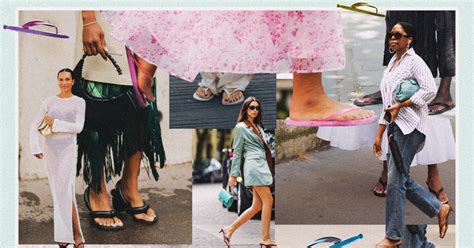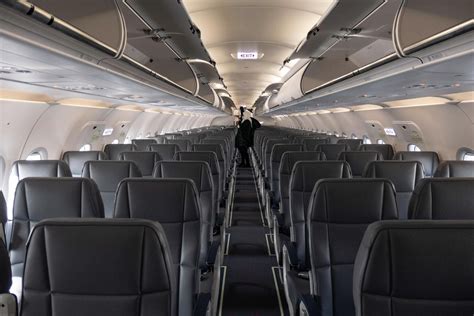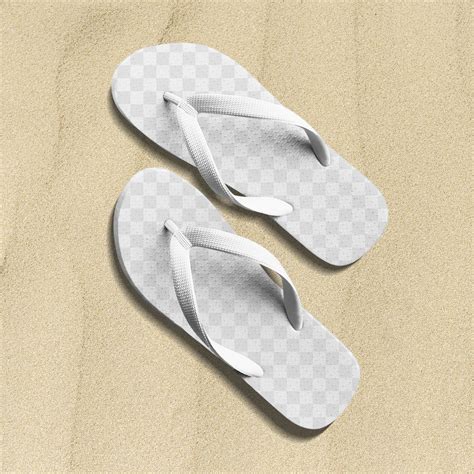
Fashion-forward individuals are reportedly trading in their flip-flops for more polished, closed-toe shoe options, signaling a potential shift away from the ubiquitous summer staple. Citing both aesthetic preferences and practical considerations like foot protection and hygiene, style influencers and everyday consumers are increasingly favoring alternatives like loafers, ballet flats, and espadrilles.
The reign of the flip-flop may be waning as fashion enthusiasts seek alternatives that offer both style and substance. While flip-flops have long been a go-to for casual summer wear, a growing number of people are turning to closed-toe shoes for their enhanced sophistication, protection, and overall appeal. This trend reflects a desire for footwear that can seamlessly transition from casual outings to more refined settings.
“I’m officially done wearing flip-flops in the city,” declares one fashion influencer, echoing the sentiments of many who find the open-toed sandal impractical and unhygienic for urban environments. The desire for a more polished and protected footwear option has led to a surge in popularity for closed-toe alternatives, which offer a blend of comfort and style that flip-flops often lack.
The Rise of Closed-Toe Alternatives
Several factors are contributing to the decline in flip-flop popularity. Firstly, there’s a growing awareness of foot health and hygiene. Flip-flops expose feet to dirt, germs, and potential injuries, making them less appealing for everyday wear, especially in urban settings. Secondly, fashion trends are evolving, with an emphasis on more refined and sophisticated styles. Closed-toe shoes, such as loafers, ballet flats, and espadrilles, offer a more polished look that aligns with current fashion sensibilities.
Loafers, with their timeless design and versatility, have become a popular choice for those seeking a comfortable yet stylish alternative to flip-flops. Ballet flats, known for their elegance and ease of wear, provide a chic option for both casual and dressy occasions. Espadrilles, with their comfortable soles and breathable fabrics, offer a summery vibe while still providing the coverage and protection of a closed-toe shoe.
The shift away from flip-flops isn’t just a matter of personal preference; it’s also influenced by broader cultural and societal trends. As people become more conscious of their health and well-being, they’re seeking footwear that prioritizes comfort and protection. Additionally, the rise of social media and fashion blogs has exposed people to a wider range of style options, inspiring them to experiment with different looks and embrace new trends.
“I find myself reaching for my loafers or ballet flats more often than flip-flops these days,” says Sarah Miller, a fashion blogger. “They’re just so much more versatile and comfortable for walking around the city. Plus, they look more put-together.”
Hygiene and Health Concerns
One of the primary reasons for the decline in flip-flop popularity is the growing awareness of hygiene and health concerns associated with wearing them. Flip-flops expose feet to dirt, bacteria, and fungi, increasing the risk of infections and other foot problems. The lack of support and cushioning can also lead to foot pain and discomfort, especially when walking long distances.
Podiatrists often advise against wearing flip-flops for extended periods, citing the potential for foot injuries and infections. “Flip-flops offer minimal support and protection, making them a breeding ground for bacteria and a common cause of foot problems,” explains Dr. Emily Carter, a podiatrist. “I recommend wearing closed-toe shoes whenever possible, especially in public places.”
The open design of flip-flops also makes them more likely to cause injuries. Stubbed toes, cuts, and abrasions are common occurrences for flip-flop wearers, particularly in crowded or uneven environments. The lack of ankle support can also increase the risk of sprains and other ankle injuries.
Fashion and Style Considerations
In addition to hygiene and health concerns, fashion and style considerations are also playing a significant role in the shift away from flip-flops. While flip-flops may be appropriate for the beach or pool, they’re often considered too casual for other settings. Closed-toe shoes, on the other hand, offer a more polished and sophisticated look that can be dressed up or down to suit different occasions.
The rise of athleisure and streetwear has also influenced footwear trends. Sneakers, once relegated to the gym, have become a fashion staple, offering a comfortable and stylish alternative to flip-flops. Other closed-toe options, such as boots and oxfords, are also gaining popularity, providing a versatile range of styles to choose from.
“I used to wear flip-flops everywhere, but now I realize they’re just not appropriate for every occasion,” says John Davis, a fashion enthusiast. “I prefer to wear sneakers or loafers when I’m out and about. They’re more comfortable, stylish, and versatile.”
The Impact on the Footwear Industry
The decline in flip-flop popularity could have a significant impact on the footwear industry. Flip-flops have long been a major source of revenue for shoe manufacturers and retailers, but as consumers shift towards closed-toe alternatives, companies may need to adjust their product offerings to meet changing demands.
Some footwear companies are already responding to the trend by introducing new lines of closed-toe shoes that are designed to be both comfortable and stylish. These shoes often incorporate features such as cushioned insoles, breathable fabrics, and arch support to provide a more comfortable and supportive wearing experience.
The rise of e-commerce has also made it easier for consumers to find and purchase closed-toe shoes online. Online retailers offer a wide selection of styles and brands, allowing consumers to shop from the comfort of their own homes and compare prices easily.
The Future of Footwear
The shift away from flip-flops is likely to continue as consumers become more aware of the health, hygiene, and fashion considerations associated with footwear. Closed-toe shoes offer a more versatile and practical option for everyday wear, providing comfort, protection, and style.
While flip-flops may still have a place in certain settings, such as the beach or pool, they’re unlikely to remain the dominant footwear choice for most people. As fashion trends evolve and consumer preferences change, closed-toe shoes are poised to become the new go-to for those seeking both comfort and style.
Beyond the Trend: A Deeper Dive into Footwear Choices
The move away from flip-flops highlights a broader trend: a growing awareness of the importance of footwear in overall health and well-being. Consumers are no longer solely focused on aesthetics; they’re also considering factors such as support, cushioning, and breathability when choosing their shoes. This trend is driven by a combination of factors, including increased awareness of foot health issues, the rise of active lifestyles, and the growing popularity of comfort-focused footwear brands.
The Role of Social Media and Influencers
Social media platforms like Instagram and TikTok have played a significant role in shaping footwear trends. Fashion influencers often showcase their favorite closed-toe shoes, inspiring their followers to experiment with different styles and embrace new trends. These influencers often highlight the versatility and practicality of closed-toe shoes, demonstrating how they can be styled for various occasions.
The visual nature of social media makes it an ideal platform for showcasing footwear. Influencers can create engaging content that highlights the design, comfort, and functionality of different shoe styles. This can help consumers make informed purchasing decisions and discover new brands and trends.
The Comfort Factor: A Key Driver of Change
Comfort is a major factor driving the shift away from flip-flops. Many closed-toe shoes are designed with comfort in mind, featuring cushioned insoles, arch support, and breathable materials. This makes them a more comfortable option for walking, standing, and other activities.
The rise of athleisure has also contributed to the demand for comfortable footwear. Athleisure shoes, such as sneakers and trainers, are designed for both athletic activities and everyday wear. They offer a combination of comfort, support, and style, making them a popular choice for those seeking a versatile footwear option.
The Environmental Impact of Footwear
The environmental impact of footwear is also becoming a growing concern for consumers. Many flip-flops are made from unsustainable materials, such as plastic and rubber, which can contribute to pollution and waste. Some footwear companies are responding to this concern by producing shoes made from recycled materials or sustainable alternatives.
Consumers are also becoming more aware of the ethical implications of footwear production. Some brands are committed to fair labor practices and sustainable manufacturing processes, which can help reduce the environmental and social impact of footwear.
The Resurgence of Classic Styles
The shift away from flip-flops has also led to a resurgence of classic shoe styles, such as loafers, ballet flats, and oxfords. These shoes have been around for decades, but they’re now being rediscovered by a new generation of consumers. They offer a timeless and versatile look that can be dressed up or down to suit different occasions.
The popularity of classic shoe styles reflects a broader trend towards timeless and sustainable fashion. Consumers are increasingly seeking out pieces that are well-made, durable, and versatile, rather than following fleeting trends. This shift towards quality over quantity is driving demand for classic shoe styles that can be worn for years to come.
The Importance of Proper Foot Care
The shift away from flip-flops also highlights the importance of proper foot care. Wearing supportive and well-fitting shoes can help prevent foot problems, such as bunions, hammertoes, and plantar fasciitis. It’s also important to practice good foot hygiene, such as washing your feet regularly and wearing clean socks.
Podiatrists recommend wearing shoes that provide adequate arch support, cushioning, and breathability. They also advise against wearing shoes that are too tight or too loose, as this can lead to foot pain and discomfort. Regular foot exams can help detect and treat foot problems early on.
The Future of Footwear Design
The future of footwear design is likely to be driven by a combination of factors, including comfort, sustainability, and technology. Footwear companies are constantly innovating to create shoes that are more comfortable, supportive, and environmentally friendly.
3D printing technology is also being used to create custom-fit shoes that are tailored to the individual’s foot shape and size. This technology has the potential to revolutionize the footwear industry, allowing consumers to create shoes that are perfectly suited to their needs.
The Economic Factors at Play
Economic factors also influence consumer choices regarding footwear. Flip-flops are often seen as a budget-friendly option, while closed-toe shoes can sometimes be more expensive. However, the long-term value of closed-toe shoes, in terms of durability and versatility, can often outweigh the initial cost.
The availability of affordable closed-toe options is also increasing, making them more accessible to a wider range of consumers. Online retailers and discount shoe stores offer a variety of closed-toe shoes at competitive prices, making it easier for people to switch from flip-flops to more stylish and practical alternatives.
The Regional Variations in Footwear Preferences
Footwear preferences can also vary depending on geographic location and climate. In warmer climates, flip-flops may still be a popular choice for casual wear, while in cooler climates, closed-toe shoes are more practical and appropriate.
Cultural factors can also influence footwear choices. In some cultures, certain types of shoes are considered more formal or appropriate for certain occasions. These cultural norms can shape consumer preferences and influence the demand for different types of footwear.
The Gender Dynamics in Footwear Trends
Footwear trends can also be influenced by gender dynamics. Women’s footwear tends to be more diverse and fashion-driven than men’s footwear, with a wider range of styles and trends to choose from. However, men’s footwear is also becoming more fashion-conscious, with a growing emphasis on style and versatility.
The shift away from flip-flops is evident in both men’s and women’s footwear trends. Both genders are increasingly seeking out closed-toe alternatives that offer a combination of comfort, style, and practicality.
The Psychology of Footwear Choices
Footwear choices can also be influenced by psychological factors. Shoes can be a form of self-expression, allowing people to communicate their personality, style, and social status. They can also be a source of comfort and confidence, providing a sense of security and well-being.
The shift away from flip-flops may reflect a desire for more sophisticated and polished footwear that projects a more confident and stylish image. Closed-toe shoes can convey a sense of professionalism, sophistication, and attention to detail, which can be important in certain social and professional settings.
FAQ Section:
1. Why are people moving away from wearing flip-flops? People are moving away from flip-flops due to a combination of factors, including hygiene concerns, lack of foot support and protection, and evolving fashion trends that favor more polished and versatile closed-toe shoe options. “I’m officially done wearing flip-flops in the city,” explains one fashion influencer, which encapsulates the growing sentiment against the open-toed sandal.
2. What are some popular alternatives to flip-flops? Popular alternatives to flip-flops include loafers, ballet flats, espadrilles, sneakers, boots, and oxfords. These closed-toe options offer a blend of comfort, style, and protection that flip-flops often lack, making them suitable for various occasions and settings.
3. Are flip-flops bad for your feet? Flip-flops can pose risks to foot health. Podiatrists often advise against wearing them for extended periods due to minimal support and protection, increasing the risk of infections and injuries. As Dr. Emily Carter, a podiatrist, explains, “Flip-flops offer minimal support and protection, making them a breeding ground for bacteria and a common cause of foot problems.”
4. How has social media influenced the trend away from flip-flops? Social media platforms, particularly Instagram and TikTok, have played a crucial role. Fashion influencers showcase stylish closed-toe shoes, inspiring followers to experiment with new styles. The visual nature of these platforms effectively highlights the versatility and practicality of alternatives to flip-flops.
5. What impact might this trend have on the footwear industry? The decline in flip-flop popularity may lead footwear companies to adjust product offerings. Companies are already introducing new lines of comfortable and stylish closed-toe shoes to meet changing consumer demands. The rise of e-commerce has also made it easier for consumers to find and purchase these alternatives online.









